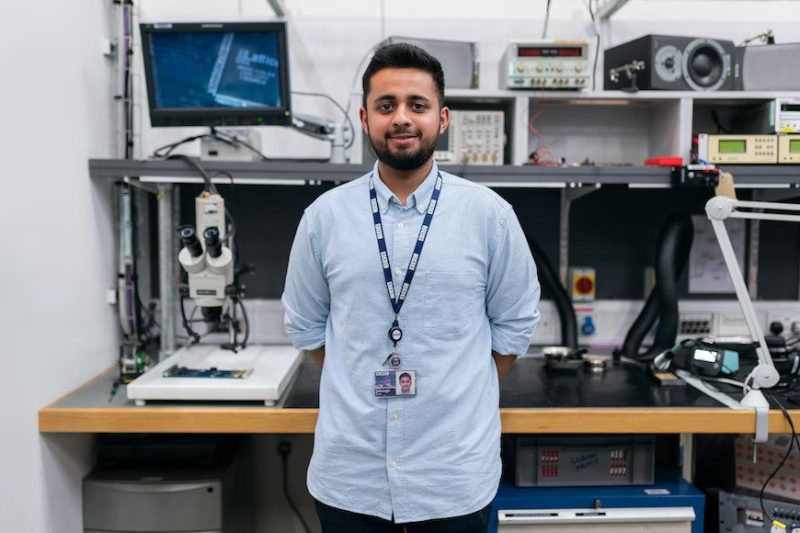Biomedical engineering and research exposed the extracellular matrix (ECM) of natural human tissues by considering the similarity of the morphology of fibrous.
The biomedical field is one of the crucial application areas for utilizing modern techniques of electrospinning/electrospraying. For instance, optical and electrical applications, filtration, nanofiber reinforcement, and microencapsulation are all possible through electrospinning and electrospraying.
Whether it’s the biomedical applications in drug delivery systems or the control over porosity and morphology, electrospinning has exposed a flexible configuration with large experiments in modern technologies.
In the medical world, it is essential to ensure advanced technology to ensure enough potential for laboratory research and provide functional opportunities to the industry. We all seek quick recovery and smooth processing of medical issues.
But without the advanced technologies and based materials or devices, it’s obvious that you are not getting the benefits of quick medical instances.
Manufacturing efficient products in the medical industry are the most important part. Here our main focus is to expose the instances of electrospinning technology, which is helping the healthcare industry and increasing its possibilities.
What Is Electrospinning/Electrospraying?
Electrospinning is a versatile process that helps contribute to emerging nanotechnology. For instance, it creates opportunities in the industry through the fabricating of nanometers and micrometers.
The electrospinning process depends on an extremely electrified polymer solution to force and extend into fibers. However, applying a high voltage through electrospraying is common for collecting the particles.
Electrospraying is also a liquid atomization-based technique that helps formulate nanoparticle cargo carriers used for biomedical applications. For instance, biomedical imaging, drug delivery, tissue engineering, and implant coatings are possible through electrospraying.
So, basically, electrospraying is a versatile technique that helps create polymeric carriers for the enzymes, genes, proteins, drugs, and other growth factors of cells.
These Electrohydrodynamic processes are flexible, simple, and also cost-effective. So, it’s time to focus on the advanced potential of electrospinning/electrospraying technology by conglomerating emerging healthcare possibilities.
The Potential Of Electrospinning/Electrospraying To Advance Healthcare Possibilities
The diameter of fibrous components, Physical architecture, Mechanical properties, and porosity are the main characteristics of these Electrohydrodynamic processes.
The advantage of electrospinning/electrospraying is the control over morphology, porosity, and composition. Product development and industrial manufacturing are best possible through the help of a new generation of electrospinning equipment in the healthcare industry.
1. Controlled Drug Delivery
Physical adsorption of drugs is best possible through an electrospun matrix for the burst release of drugs. Well, the post-electrospinning concept considers a controlled release of drugs by surface localization and high encouragement.
Well, it prevents the bioactive elements from denaturation and destabilization during the process.
But what is the principle of using the electrospinning process and polymer nanofibers for drug delivery?
Well, the dissolution rate of drugs climbs up with the surface area of the drug and carrier. So, a large surface-to-volume ratio can afford high efficiency and capacity of drug loading. On the other hand, these nanofibers use different drug encapsulation designs to ensure better bioavailability.
2. Regenerative Medicine and Tissue Engineering
Damaged tissue regeneration is the main purpose of tissue engineering. It is a multidisciplinary regenerative process that helps lure the growth to new tissue.
On the other hand, this regeneration process considers the accommodation of cells that are made of porous scaffolds to encapsulate in place of damaged tissues. Electrospinning and its nanofibrous scaffold fabrication provide efficient replication of anisotropic and complex structures of cartilage and tenders. These tissue-to-tissue interfaces and their functionality is best adjusted through tissue engineering.
Apart from that, electrospinning helps initiate electrochemical stimulation for cardiac tissue and scar inhibition of skin, including anti-thrombogenicity of vascular grafts.
3. Biosensor
Biosensors are used for detecting biological substances. It consists of transducers and biofunctional membranes to initiate cancer diagnosis. Here the membrane recognizes the substances, and transducers alter these substances into output signals.
This sensing membrane biosensor adds selectivity, sensitivity, and reproducibility, including the response time at its best. The optimal sensitivity in the recognition process is very crucial. Apart from that, nanofibers that have a large surface-to-volume ratio can provide better binding sites.
Overall, the performance of electrospun nanofibers sensing cancer tissues is a big step towards advanced medical technology. The healthcare sectors and the research laboratories are getting highly beneficial with the involvement of electrospinning/electrospraying technology.
Read Also:




























